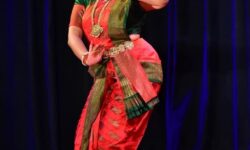KOCHI:
As an art form that combines drawing, sculpting and music, ‘kalamezhuthu’ has a unique place in Kerala’s culture, but it needs to be made secular for it to be popularized and accessible, according to renowned artist and art and culture expert Satyapal.
“Kalamezhuthu is not a painting, but an inspiration; a process that shows collective consciousness. Many different art forms like chitram (painting), shilpam (sculpting), nritham (Dancing), thalam (Rhythm), natyam (Performance) comes together in this functional art form,” Satyapal said at an Abhikukam organised by Sahapedia.org to discuss this ancient ritualistic art practice.
Kalamezhuthu involves drawing elaborate and intrinsic figures of deities on the floor using natural products like rice flour (white-represents water), charcoal powder (black-sky), powdered green leaves (green-Air), turmeric powder (yellow-earth) and a mixture of turmeric powder and lime (red-fire), a process which can take up to two hours.
A wide spectrum of emotions are expressed in these works, as the artists bare their very heart and soul during the ritual which is accompanied by Kalamezhuthupattu. It is believed that the deities come alive as the vibrant colours take their final shapes. The designs are erased with tender coconut leaves (Kuruthola) at the end of the ritual in the backdrop of rythms of various traditional musical instruments comprising ilathalam, veekkanchenda, kuzhal, kombu and chenda.
“The history and aesthetics of Kalamezhuthu which are scattered through the pages of the past need to be compiled in a comprehensive study and analysed to keep the art form alive for the coming generations,” said Satyapal.
The artists have traditionally belonged to the Kurups, Theyyampadi Nambiars, Theeyadi Nambiars and Theeyadi Unnis communities, each having their own unique kalam traits.
“The responsibility of preserving Kalamezhuthu, which is so unique to Kerala, rests on our shoulders. This art form needs to be made secular, only then will it be well received in this democratic space,” said the artist who has formerly served as Secretary, Lalithakala Akademi.
Abhimukham, organized by Sahapedia.org, an open online resource, is a monthly talk series on subjects relating to art, heritage and culture of India designed to expand public knowledge. During the discussions, further studies on this art form were encouraged and it was suggested that the treasure trove of designs used in Kalams be incorporated in handlooms, handicrafts and in other suitable areas to generate incomes that can help sustain this art.
Kalamezhuthu has traditionally been practiced for prosperity, a good crop yield, for family integrity and peace, betterment of society and family, to overcome phobias or fears during conception, psychological and mental disorders.




